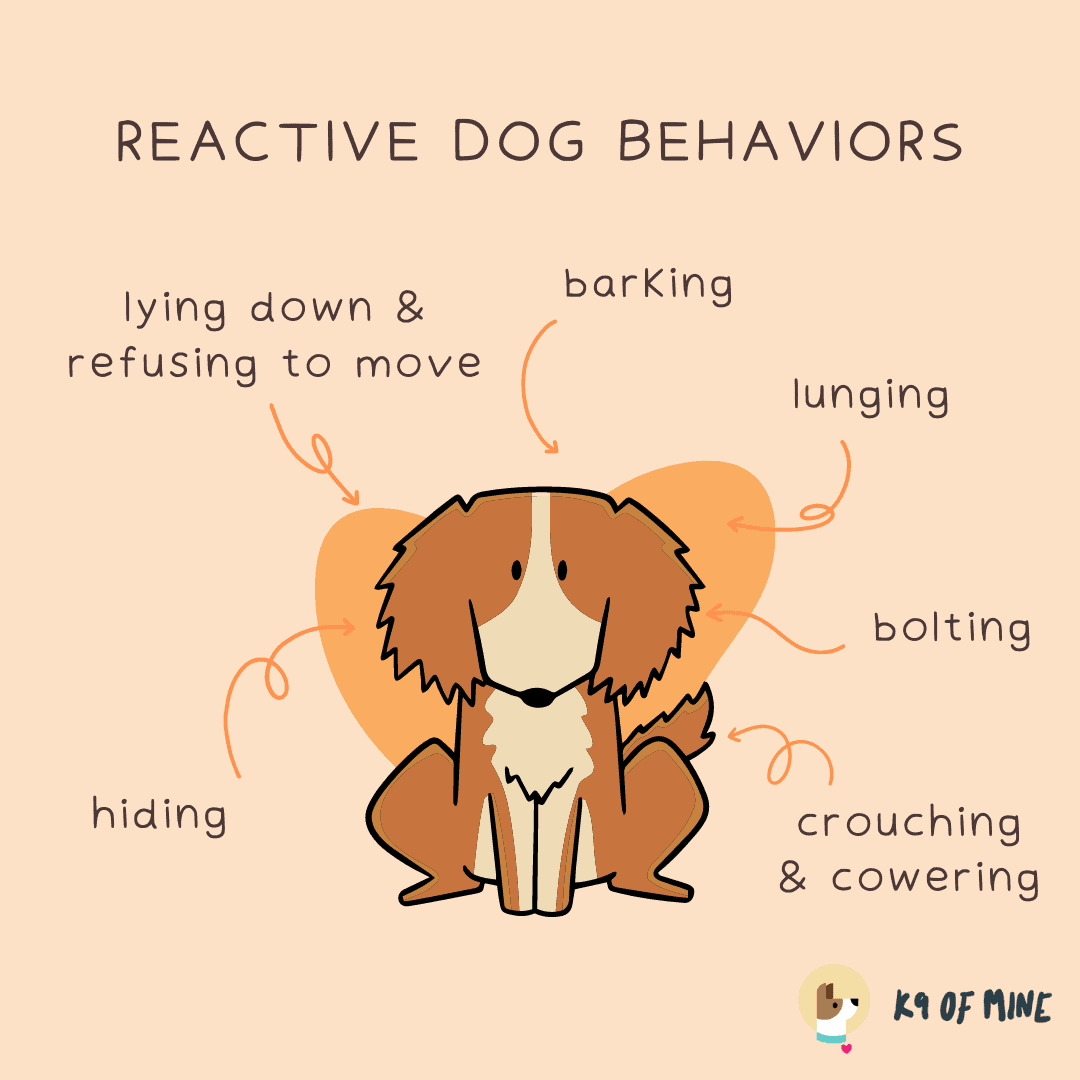Table of Contents
If you’re the proud owner of a reactive dog, you understand the unique challenges that come with their behavior. It can be frustrating and overwhelming at times, but don’t worry – there are effective training techniques that can help you and your furry friend on the path to success. In this article, we’ll explore some practical strategies and tips that have proven to be successful in training reactive dogs. From positive reinforcement to desensitization exercises, you’ll discover a variety of approaches that can lead to a happier and more harmonious relationship between you and your beloved companion. So, let’s get started on this journey to a calmer and more confident canine!

Understanding Reactive Dogs
Reactive dogs are those that display excessive or intense reactions to certain stimuli, such as other dogs, people, noises, or unfamiliar environments. These reactions can include barking, lunging, growling, or even aggressive behavior. It is important to understand that reactive behaviors stem from fear, anxiety, or a lack of socialization rather than being a result of inherent aggression.
Definition of a Reactive Dog
A reactive dog is a dog that reacts to certain triggers with fear or aggression, often exhibiting excessive or intense behaviors as a result. These triggers can vary from dog to dog and may include other dogs, strangers, loud noises, or unfamiliar environments. Reactivity in dogs can be a learned behavior or a response to past traumatic experiences, and it is important to address and manage this behavior in a positive and effective way.
Causes of Reactive Behavior
Reactive behavior in dogs can have various causes, which may include a lack of socialization during their critical developmental period, traumatic experiences, genetic predisposition, fear or anxiety disorders, or even learned behavior from past encounters. Understanding the underlying causes of reactive behavior is crucial for developing effective training strategies and addressing the root of the problem.
Common Reactive Behaviors
Common reactive behaviors exhibited by dogs include barking, lunging, growling, snarling, snapping, or even attempting to bite. These behaviors are often a result of fear, anxiety, or a defensive response to perceived threats or triggers. Reactive dogs may display these behaviors when encountering other dogs, strangers, or novel situations. It is important to recognize and understand these behaviors in order to effectively work with reactive dogs.
Recognizing Signs of Reactivity
Recognizing signs of reactivity in dogs is essential for early intervention and effective training. Some common signs of reactivity include excessive vocalization, tense body language, raised hackles, excessive sniffing or biting, trembling, or attempts to hide or escape. By being attentive to these signs, dog owners can proactively address reactivity and provide the necessary support and training to their pets.
Preparing for Training
Before embarking on a training journey with a reactive dog, it is important to ensure safety measures are in place. This includes using sturdy leashes and harnesses, using a muzzle if necessary, and creating a calm and controlled environment to minimize the risk of harm to the dog or others.
Safety Measures
Safety should be a top priority when training a reactive dog. Using a sturdy leash and harness setup is crucial for maintaining control and preventing the dog from escaping or causing harm. In some cases, a muzzle may be necessary to ensure the safety of others. Additionally, it is important to choose a suitable training area where distractions can be minimized to increase the chances of successful training sessions.
Equipment Needed
When training reactive dogs, it is essential to have the right equipment. This includes a sturdy leash and harness to maximize control and minimize the risk of the dog escaping or pulling. Treat pouches or treat bags can be helpful for easy access to rewards during training sessions. For dogs with significant reactivity or potential aggression, a muzzle may be necessary. Consulting with a professional trainer can help determine which equipment is suitable for your dog’s needs.
Choosing the Right Environment
Selecting the right environment for training a reactive dog is essential for success. It is important to choose a location with minimal distractions and potential triggers, such as a quiet park or a fenced backyard. Gradually introducing more challenging environments as the dog progresses can help build confidence and increase the chances of successful training outcomes.
Positive Reinforcement Techniques
Positive reinforcement techniques focus on rewarding desired behaviors, which encourages dogs to repeat those behaviors in the future. This approach is particularly effective for reactive dogs, as it helps to build trust, confidence, and positive associations with triggers or potentially stressful situations.
The Power of Positive Reinforcement
Positive reinforcement is a powerful training technique that involves rewarding the dog for exhibiting desired behaviors. This can be done through the use of treats, verbal praise, or petting. By rewarding the dog when they display calm or appropriate behaviors, they are more likely to repeat those behaviors in the future. Positive reinforcement is especially important for reactive dogs as it helps to build their confidence and trust in the training process.
Identifying and Using Rewards
Identifying the right rewards for your dog is crucial for successful positive reinforcement training. Every dog is different, so experiment with different types of rewards such as high-value treats, verbal praise, or favorite toys to figure out what motivates your dog the most. It is important to remember that rewards should be immediate, meaningful, and tailored to your dog’s preferences to effectively reinforce desired behaviors.
Timing and Consistency
Timing and consistency are key when using positive reinforcement techniques. It is important to reward the dog immediately after they exhibit the desired behavior. This helps the dog associate the behavior with the reward. Consistency is also important in reinforcing desired behaviors, as inconsistent rewards can confuse the dog and hinder progress. Establishing a consistent training routine and reinforcing positive behaviors consistently will yield better results when working with reactive dogs.
Clicker Training for Reactive Dogs
Clicker training is a popular positive reinforcement technique that can be particularly effective for reactive dogs. The clicker serves as a marker to communicate to the dog when they have performed the desired behavior. By pairing the sound of the clicker with rewards, the dog quickly learns to associate the click with positive outcomes. Clicker training can help enhance communication and precision in training reactive dogs.
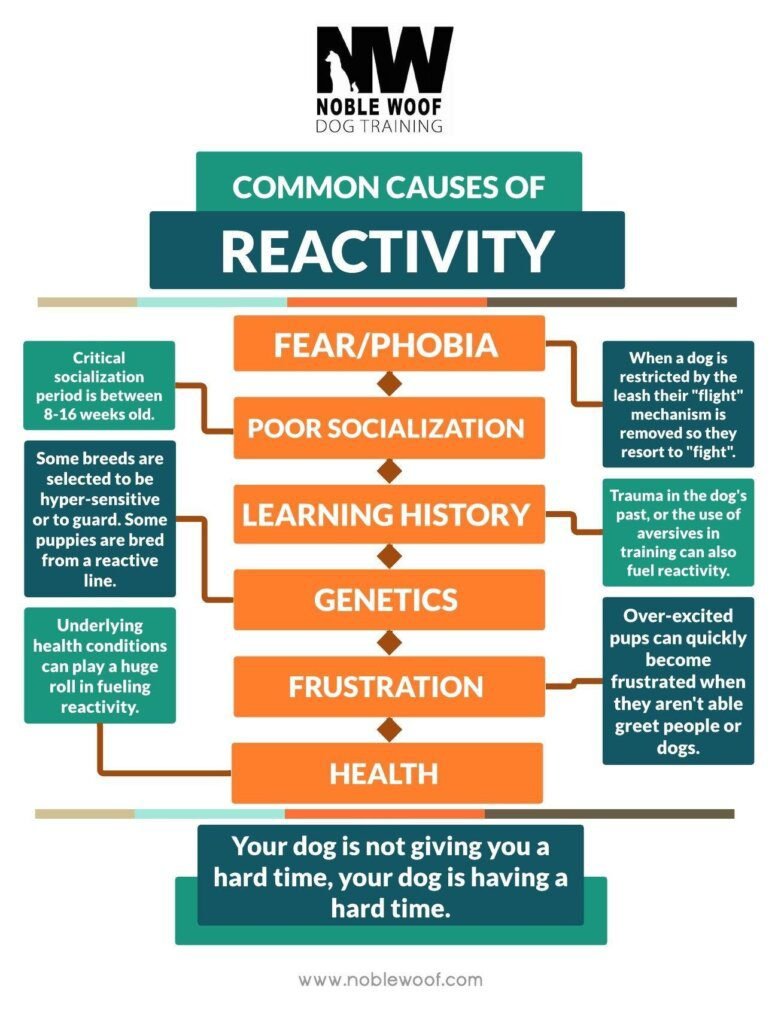
Counterconditioning and Desensitization
Counterconditioning and desensitization techniques are commonly used to modify reactive behavior in dogs. These techniques involve gradually exposing the dog to triggers in a controlled and positive manner to change their emotional response. Through consistent and systematic exposure, reactive dogs can learn to associate previously fearful or reactive triggers with positive experiences.
Understanding Counterconditioning
Counterconditioning involves changing the dog’s emotional response to triggers from a negative one to a positive one. This is done by pairing the trigger with something the dog finds enjoyable, such as treats, playtime, or verbal praise. Over time, the dog learns to form positive associations with the trigger, leading to a reduction in reactive behaviors.
Desensitization Strategies
Desensitization involves gradually exposing the dog to triggers in a controlled and manageable way. This allows the dog to build tolerance and learn that the trigger does not necessarily mean harm or danger. Starting with low-intensity exposures and gradually increasing the intensity or duration of the exposure helps the dog to develop coping mechanisms and reduce their reactivity over time.
Gradual Exposure to Triggers
When using desensitization techniques, it is important to start with low-level exposure to triggers. This may involve starting at a distance from the trigger where the dog is calm and gradually moving closer as they become more comfortable and less reactive. This gradual exposure allows the dog to build confidence and learn that the trigger is not a threat.
Creating Positive Associations
Creating positive associations with triggers is a crucial aspect of counterconditioning and desensitization. By pairing the trigger with something the dog enjoys, such as treats or playtime, the dog learns to associate the trigger with positive experiences. This helps to change their emotional response from fear or reactivity to a more positive and relaxed state.
Behavior Modification
Behavior modification techniques aim to replace undesirable behaviors with more appropriate or desired behaviors. When working with reactive dogs, behavior modification strategies focus on addressing triggers, managing thresholds, redirecting attention, and teaching alternative behaviors.
Identifying Triggers
Identifying the specific triggers that cause reactive behavior in a dog is an essential step in behavior modification. Triggers can vary from dog to dog, so it is important to carefully observe and assess the dog’s reactions to different situations. This allows trainers to design targeted training plans and provide appropriate support tailored to the individual dog’s needs.
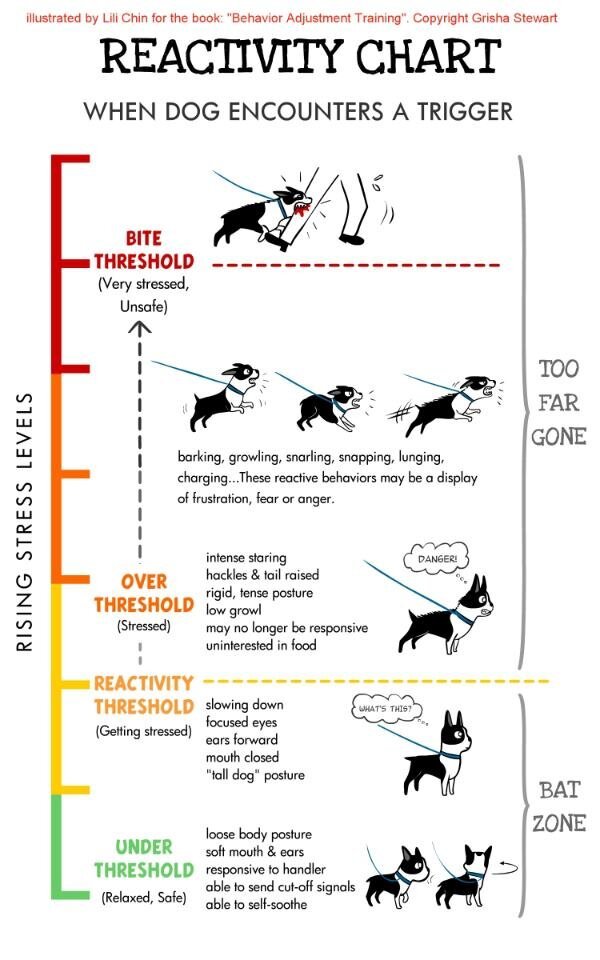
Threshold Management
Threshold management is a critical aspect of behavior modification for reactive dogs. The threshold refers to the point at which a dog’s reactive behaviors are triggered. By managing the distance or intensity of the trigger, trainers can help the dog remain below their threshold, preventing reactive behaviors from escalating.
Redirecting Attention
Redirecting a reactive dog’s attention can be an effective technique for managing their reactive behaviors. Teaching the dog to focus on an alternative behavior, such as sitting or performing a specific command, helps shift their attention away from the trigger and towards a more appropriate response. This technique can help prevent or interrupt reactive behaviors and promote calmness and focus.
Teaching Alternative Behaviors
Teaching alternative behaviors is an important aspect of behavior modification for reactive dogs. By providing the dog with alternative behaviors that are incompatible with reactivity, such as sitting or offering a paw, trainers can redirect their energy and focus towards a more appropriate response. Consistent reinforcement of these alternative behaviors helps to replace reactive behaviors over time.
Managing Reactive Situations
When working with reactive dogs, it is important to be proactive in managing and preventing reactive situations. This involves understanding and interpreting dog body language and signals, implementing effective leash handling techniques, maintaining distance control, and handling unexpected encounters in a calm and controlled manner.
Reading Dog Body Language and Signals
Understanding and interpreting dog body language and signals is key to managing reactive situations. Signs of stress or anxiety, such as a stiff body posture, raised hackles, or avoidance behavior, can indicate that a dog is beginning to feel reactive. By recognizing these signs early on, trainers can take appropriate measures to prevent escalation and ensure the safety of all involved.
Importance of Leash Handling
Effective leash handling is crucial when working with reactive dogs. Keeping a firm grip on the leash and maintaining control helps prevent the dog from lunging or bolting towards triggers. Using a leash that provides optimal control, such as a sturdy harness or head halter, can significantly assist in managing reactive situations.
Distance Control Techniques
Maintaining a suitable distance from triggers is essential for managing reactive dogs. This distance allows the dog to remain below their threshold and helps prevent reactive behaviors from occurring. Implementing techniques such as walking in wide arcs around triggers or using visual barriers can assist in maintaining a safe distance and avoiding unnecessary confrontations.
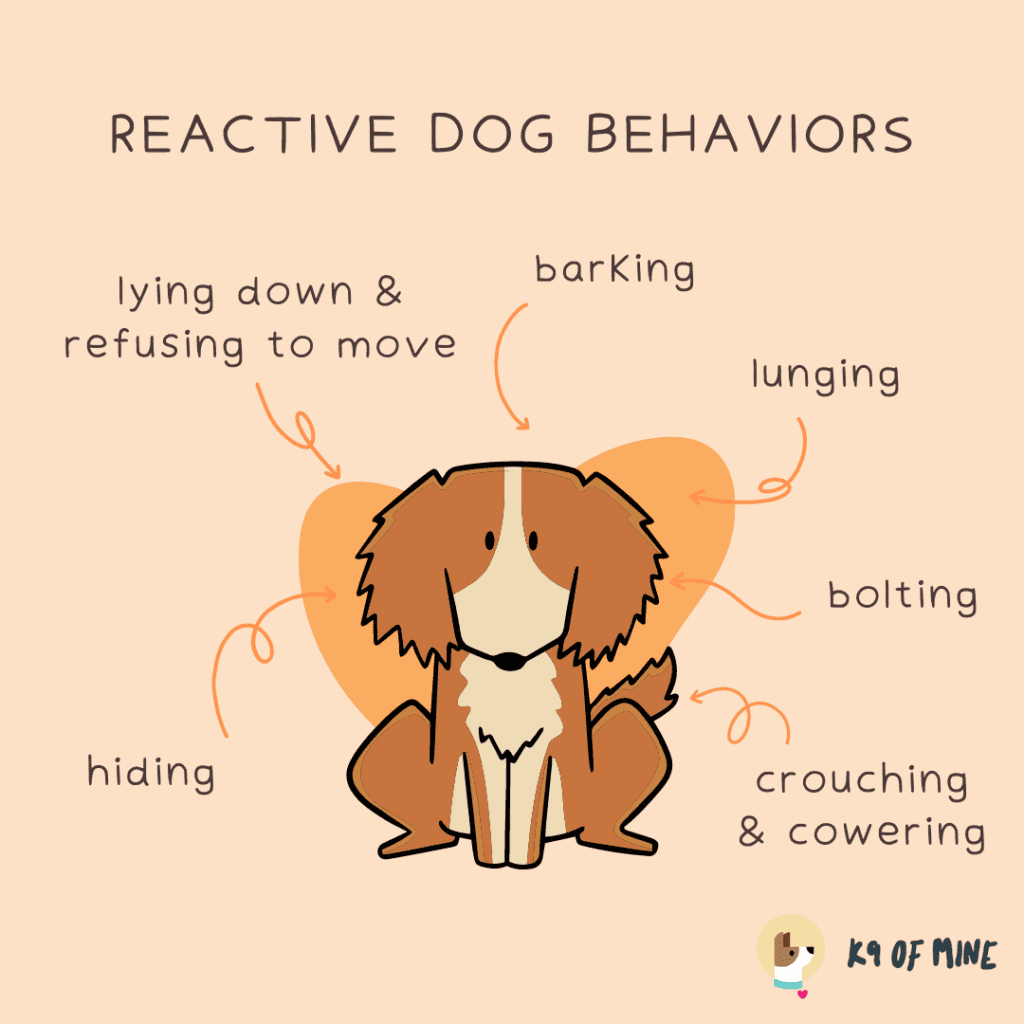
Handling Unexpected Encounters
Even with careful planning and management, unexpected encounters with triggers may still occur. In such situations, it is important to remain calm and composed. Redirecting the dog’s attention to a previously trained alternative behavior or creating distance between the dog and the trigger can help de-escalate the situation. Staying alert and responsive to the dog’s needs is crucial in handling unexpected encounters safely.
Building Trust and Confidence
Building trust and confidence is a fundamental aspect of working with reactive dogs. Through positive reinforcement, creating a safe space, implementing calming techniques, and gradually exposing dogs to new experiences, trainers can help their dogs overcome their reactive behaviors and develop a sense of security and trust.
Establishing a Bond with Your Dog
Establishing a strong bond with a reactive dog is essential for effective training and behavior modification. Spending quality time together, engaging in positive activities such as play or training sessions, and providing consistent care and support all contribute to building a trusting relationship. A strong bond helps the dog feel secure and more receptive to training efforts.
Creating a Safe Space
Creating a safe space for a reactive dog is important for their overall well-being and behavior modification. This can be a designated area in the home where the dog feels comfortable and secure. Providing access to toys, treats, and a comfortable resting place within this safe space helps the dog associate positive experiences with that area, further enhancing their feelings of security.
Calming Techniques
Implementing calming techniques can be beneficial for reactive dogs and help them manage their reactive behaviors. Techniques such as deep pressure therapy, massage, or gentle touch can help promote relaxation and reduce anxiety. Utilizing calm and soothing tones during interactions with the dog can also contribute to a more relaxed state of mind.
Gradual Exposure to New Experiences
Gradual exposure to new experiences is important for building a reactive dog’s confidence. Introducing new environments, people, or animals in a controlled and positive manner helps the dog learn that new experiences are not always threatening or dangerous. Gradual exposure promotes a sense of safety and can help reduce reactivity over time.
Working with Professional Trainers
Seeking professional guidance when working with reactive dogs can greatly increase the likelihood of success. Trainers with experience in working with reactive dogs can provide valuable insights, personalized training plans, and ongoing support throughout the training journey.
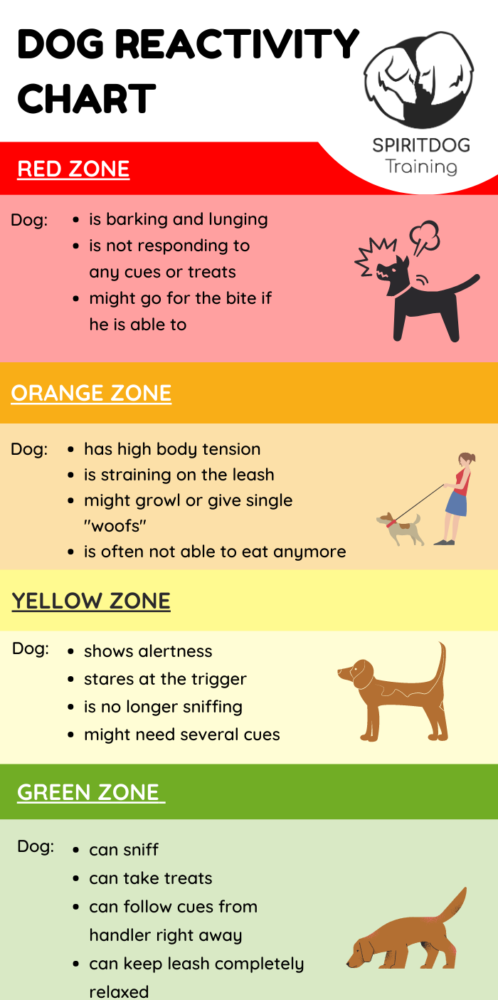
Benefits of Professional Guidance
Professional trainers specialize in working with reactive dogs and have the knowledge and expertise to address behavior issues effectively. They can provide guidance tailored to the specific needs of an individual dog, offer support for both the owner and the dog, and work in a safe and controlled environment to ensure the best possible outcomes.
Choosing a Qualified Trainer
When selecting a trainer for a reactive dog, it is important to ensure they have the necessary qualifications and experience. Look for trainers who are certified, have experience in working with reactive dogs, and use positive reinforcement techniques. Researching and reading reviews can also provide insights into their approach and success rates.
Collaborating with a Trainer
Collaborating with a professional trainer is a collaborative effort between the owner, the dog, and the trainer. Owners should actively participate in training sessions, follow the trainer’s guidance, and provide regular updates on the dog’s progress. Good communication and a strong partnership with the trainer can lead to more effective training and better results.
Evaluating Training Progress
Regular evaluation of training progress is essential to ensure that the training methods are effective and to make any necessary adjustments. Professional trainers can assess the dog’s progress and provide feedback on the training program. Evaluating progress allows for modifications to be made if needed and helps track the dog’s overall improvement.
Consistency and Patience
Consistency and patience are keys to success when working with reactive dogs. Modifying reactive behaviors takes time and effort, and it is important to remain dedicated and patient throughout the process. Consistently reinforcing desired behaviors, maintaining a regular training schedule, and celebrating small victories are important elements in achieving long-term success.
Understanding the Time and Effort Required
Modifying reactive behaviors in dogs is a gradual process that requires time and effort from both the owner and the dog. Progress may not be immediate, and setbacks may occur along the way. Understanding and accepting this reality is crucial to avoid frustration and to stay committed to the training journey.
Stick to a Training Schedule
Consistency is key when working with reactive dogs. Establishing a regular training schedule helps create a routine and reinforces training progress. Regular training sessions provide opportunities for the dog to practice desired behaviors and build consistency, leading to improved outcomes.
Importance of Consistency
Consistency in training methods, cues, and expectations is essential when working with reactive dogs. Dogs thrive on routine and clear communication, so using consistent language, hand signals, and training techniques helps them understand what is expected of them. Consistency aids in building trust, promoting positive associations, and reinforcing desired behaviors.
Celebrating Small Victories
Recognizing and celebrating small victories is an important aspect of training reactive dogs. Acknowledging even the smallest improvements or instances of desired behaviors reinforces their importance and encourages the dog to continue progressing. Celebrating these milestones helps build motivation, positivity, and resilience throughout the training process.
Addressing Underlying Issues
Reactive behavior in dogs can sometimes be influenced by underlying issues such as separation anxiety, fear and anxiety disorders, or past traumatic experiences. Consulting with a veterinarian or a certified animal behaviorist can provide valuable insights and guidance in addressing these underlying issues.
Separation Anxiety
Separation anxiety can contribute to reactive behavior in dogs. Dogs with separation anxiety exhibit significant distress when separated from their owners, which can trigger reactive behaviors. Treating separation anxiety may require a multifaceted approach, including behavior modification techniques, environmental management, and, in some cases, medication.
Fear and Anxiety Disorders
Fear and anxiety disorders can significantly impact a dog’s behavior and contribute to reactivity. Addressing fear and anxiety disorders may involve implementing behavior modification techniques, creating a safe and predictable environment, and potentially incorporating the use of anti-anxiety medications. Consulting with a veterinarian or a certified animal behaviorist is essential to develop an appropriate treatment plan.
Past Traumatic Experiences
Past traumatic experiences can shape a dog’s behavior and contribute to reactivity. Dogs that have experienced abuse, neglect, or other traumatic events may exhibit reactive behaviors as a result. Treating dogs with a history of trauma may require specialized behavioral interventions, patience, and time to build trust and confidence.
Consulting a Veterinarian or Behaviorist
Consulting a veterinarian or a certified animal behaviorist is important when dealing with reactive dogs, especially if they exhibit severe reactivity or have underlying issues. These professionals can provide a thorough assessment, diagnose any underlying medical or behavioral conditions, and develop a comprehensive treatment plan based on the individual dog’s needs. They can also provide ongoing support and guidance throughout the training and behavior modification process.

